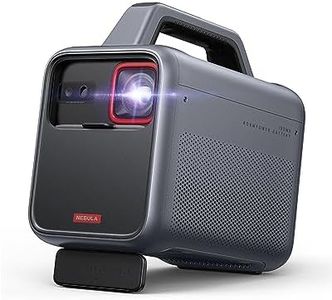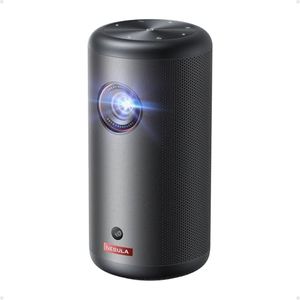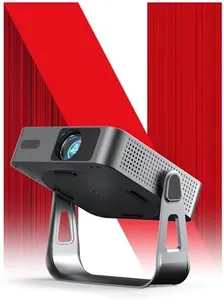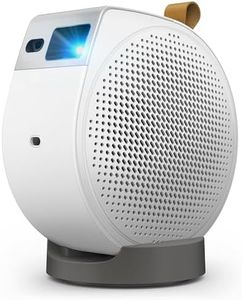We Use CookiesWe use cookies to enhance the security, performance,
functionality and for analytical and promotional activities. By continuing to browse this site you
are agreeing to our privacy policy
10 Best Portable Video Projectors
From leading brands and best sellers available on the web.By clicking on a link to a third party's website, log data is shared with that third party.
Buying Guide for the Best Portable Video Projectors
Choosing a portable video projector involves understanding your primary usage—whether for home entertainment, business presentations, outdoor movie nights, or classroom use. Think about where you'll use it most, how often you'll need to move it, and the typical conditions (such as room brightness or screen size). The key is to match the projector’s features to your needs so you get a satisfying viewing experience and ease of use.Brightness (Lumens)Brightness is measured in lumens and tells you how much light the projector can produce. This is important because it affects how visible and vibrant your images will be, especially in different lighting environments. Low-brightness projectors (under 1000 lumens) work well in dark rooms, while mid-range (1000–2000 lumens) are better for shaded spaces or evening outdoor use. High-brightness models (over 2000 lumens) handle daylight and larger spaces. If you plan to use your projector in uncontrolled lighting conditions or outdoors, opt for higher lumens; if you’ll mostly be in dim rooms, a lower output may suffice.
ResolutionResolution refers to the number of pixels the projector can display, which affects image clarity and detail. For portable projectors, you'll commonly find resolutions like 480p (basic), 720p (HD), and 1080p (Full HD), with rarer options offering higher resolutions. If you want sharp images for movies or detailed presentations, choose at least 720p, with 1080p being best for a crisp picture. For casual or children’s use, lower resolutions may be acceptable, but always match the projector’s resolution with what you intend to watch or display.
Portability (Size & Weight)Portability is all about how easy the projector is to carry and set up. Smaller and lighter projectors are easier to move and fit in bags, making them great for travel, quick setups, or frequent location changes. However, the smallest projectors may sacrifice features like brightness or sound quality. Assess how often you’ll move your projector—if it’s mainly for home use, size isn’t as critical, but if you’ll travel or move it frequently, pick a compact, lightweight model.
Battery LifeBattery life matters if you want to use your projector away from power outlets, such as outdoors or during travel. Some models offer a built-in battery, ranging from about 1 to 4 hours of operation. Consider how long your typical usage sessions last and choose a model that can cover that time on a single charge. For long movie nights, presentations, or camping, extended battery life is essential, while for shorter or more casual use, shorter battery life may be sufficient.
ConnectivityConnectivity defines how you can hook up your devices to the projector. Common options include HDMI, USB, audio jacks, and wireless methods like Bluetooth or Wi-Fi. If you plan to connect a smartphone, laptop, game console, or streaming stick, ensure the projector supports the right ports or wireless standards. If you want hassle-free streaming or sharing from multiple devices, look for models with solid wireless options. Think about the devices you already own and make sure the projector can easily connect to them.
Speaker QualityMany portable projectors have built-in speakers, but their quality and loudness can vary. For small, quiet rooms, basic speakers may be enough, but for outdoor use or larger audiences, you might want more powerful audio or the ability to connect external speakers. If you value clear sound or expect to use the projector for movies and music, check for stereo speakers or audio output ports.
Keystone Correction and Focus AdjustmentKeystone correction and focus adjustments help you get a clear and properly aligned image, even if the projector isn’t perfectly straight with the screen. Manual controls require you to adjust these settings yourself, while some models offer automatic correction. If you’ll frequently set up in different locations, especially on uneven surfaces, these features can save time and ensure a better viewing experience. For fixed setups, these features are less crucial.
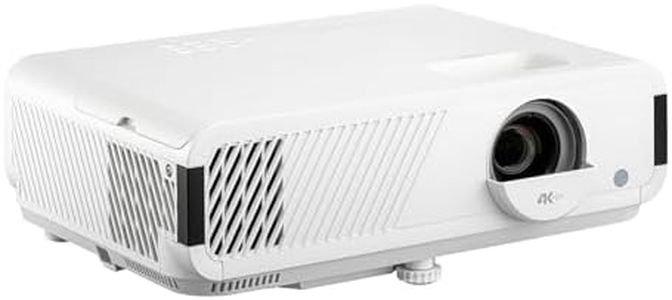
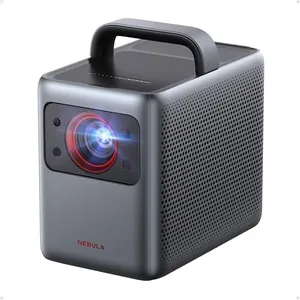
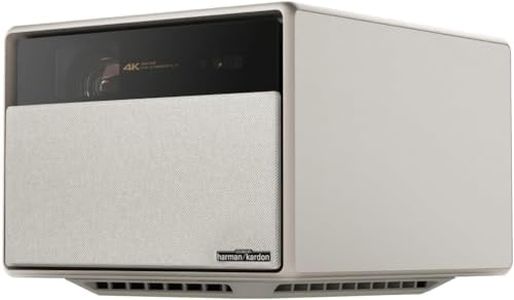


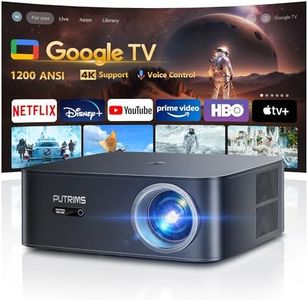
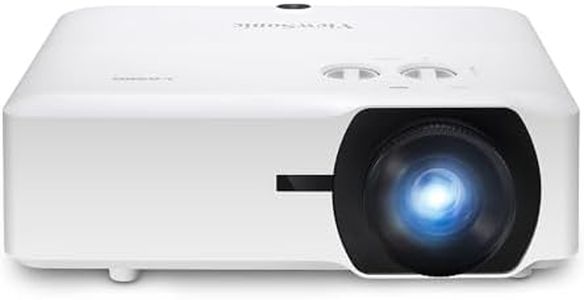
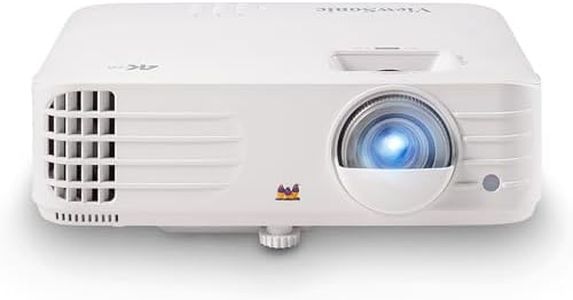
![Projector 4K [Google TV/Dolby Audio] Netflix Disney+ Official,1000 ANSI Auto Focus/Keystone 1080P Portable Projector,Voice Control, WiFi6 Bluetooth HDR10 Smart Movie Home Projector for Bedroom Outdoor](https://images-proxy.bestreviews.guide/CLWRT1xww6yQE3TnOXPYAZe2Be4=/0x300/https://m.media-amazon.com/images/I/51DC3fX1yQL._AC_CX679_.jpg)

